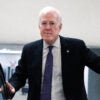There’s a lot of talk these days about patient-centered health care reform. Before Obamacare, health care revolved around employers, and little has changed since passage of the new law.
This is primarily due to federal policy regarding the tax treatment of employer-sponsored insurance, which was left untouched by the federal overhaul. In recent research, Heritage’s Gregg Girvan explains how this system has led to one-size-fits-all employer-based plans that offer “little or no personal choice; little or no portability of coverage in a rapidly changing economy where workers are changing jobs and careers; and little or no flexibility in tailoring insurance coverage to meet individual and family needs.”
The Daily Signal depends on the support of readers like you. Donate now
Obamacare moves the focus more towards government than individuals. In contrast, the new patient-centered system Utah is implementing as part of its own health care reform moves employer coverage away from “defined benefits” and towards “defined contribution.” This allows employees to apply their employers’ contribution to a health plan that works best for them. Girvan explains:
The defined-contribution option makes it easier for businesses to offer health benefits because the business is not required to find and manage the coverage. Thus, by reducing the level of effort and risk to employers in offering health benefits, it creates a path for more firms, particularly smaller ones, to begin offering their workers coverage.
Because each worker can choose the coverage he or she prefers from a wide and varied menu of plans under the defined-contribution option, it also increases the likelihood that younger workers, who generally have lower earnings, will be able to find a plan that they like and can afford.
In addition, the defined-contribution option makes it practical for employers to offer their part-time or seasonal workers prorated coverage contributions, with a reasonable expectation that those workers can then obtain coverage by combining that employer’s contribution with funds from other sources.
Utah’s health care reform was tailored to meet the unique needs of its residents, something no federal overhaul will achieve for all 50 states. In addition, the new system puts patients, not employers or the government, in the driver’s seat. By giving patients more control over their health care dollars, Utah policymakers resisted the concentration of power in Washington, providing an example for other states seeking to make a difference for their citizens. To learn more about the Utah health plan and how defined contribution serves patients, read Girvan’s full analysis, available here.





























